Basilius Besler. The Garden at Eichstatt (в 3-х томах) 22849
Botanical Beauty
A complete facsimile edition of the three-volume Hortus Eystettensis
When Prince-Bishop Johann Konrad von Gemmingen (1593/95–1612) undertook a radical renovation of the Willibaldsburg Castle, overlooking the Altmuhl River in Eichstatt, Bavaria, he also created a surrounding palatial pleasure garden of magnificence and grandeur. To preserve the garden for future generations – and provide an ‘evergreen’ record of its contents, compiling plants from all four seasons and presenting them in that order – he commissioned the garden’s director, Nuremberg apothecary Basilius Besler (1561–1629), and a team of engravers to immortalize its treasures in print.
The resulting Hortus Eystettensis, published in Nuremberg in 1613 and containing 367 hand-colored plates and detailed descriptions, was a work of meticulous execution and spectacular diversity, and remarkably expensive for its time. As the garden contained a variety of plants imported from exotic locales, the three volumes exhibited a remarkable range, covering a total of 90 families and 340 genera. Due to the decorative, stylized execution of these illustrations, which began to see plants in aesthetic, rather than merely practical or medicinal terms, the book is seen as a milestone in the art of botanical illustration. While published before a time of standardized classification systems, it was nonetheless later described by Carl Linnaeus as an “incomparable work”.
Besler’s catalog long outlived the gardens, which were destroyed in 1634 by invading Swedish troops during the Thirty Years’ War. However, a lengthy redevelopment project at the historic site has culminated in the opening of the modern Bastion Garden in 1998, containing many of the plants shown in the Hortus Eystettensis.
Offering high-quality reproductions of these arresting illustrations, based on the copy of the Hortus Eystettensis at the University Library of Eichstatt-Ingolstadt, this facsimile edition is accompanied by detailed plate descriptions of each plant’s botanical, pharmaceutical, and symbolic significance and an appendix of further essays which place the garden and the book in their historical contexts.
This edition presents a valuable piece of botanical literature which, on the rare occasions where a copy appears on the market, can fetch prices of over $1,000,000 at auction. In line with Besler’s original intentions, this facsimile unfurls the garden to a wider audience and captures it for posterity.
A complete facsimile edition of the three-volume Hortus Eystettensis
When Prince-Bishop Johann Konrad von Gemmingen (1593/95–1612) undertook a radical renovation of the Willibaldsburg Castle, overlooking the Altmuhl River in Eichstatt, Bavaria, he also created a surrounding palatial pleasure garden of magnificence and grandeur. To preserve the garden for future generations – and provide an ‘evergreen’ record of its contents, compiling plants from all four seasons and presenting them in that order – he commissioned the garden’s director, Nuremberg apothecary Basilius Besler (1561–1629), and a team of engravers to immortalize its treasures in print.
The resulting Hortus Eystettensis, published in Nuremberg in 1613 and containing 367 hand-colored plates and detailed descriptions, was a work of meticulous execution and spectacular diversity, and remarkably expensive for its time. As the garden contained a variety of plants imported from exotic locales, the three volumes exhibited a remarkable range, covering a total of 90 families and 340 genera. Due to the decorative, stylized execution of these illustrations, which began to see plants in aesthetic, rather than merely practical or medicinal terms, the book is seen as a milestone in the art of botanical illustration. While published before a time of standardized classification systems, it was nonetheless later described by Carl Linnaeus as an “incomparable work”.
Besler’s catalog long outlived the gardens, which were destroyed in 1634 by invading Swedish troops during the Thirty Years’ War. However, a lengthy redevelopment project at the historic site has culminated in the opening of the modern Bastion Garden in 1998, containing many of the plants shown in the Hortus Eystettensis.
Offering high-quality reproductions of these arresting illustrations, based on the copy of the Hortus Eystettensis at the University Library of Eichstatt-Ingolstadt, this facsimile edition is accompanied by detailed plate descriptions of each plant’s botanical, pharmaceutical, and symbolic significance and an appendix of further essays which place the garden and the book in their historical contexts.
This edition presents a valuable piece of botanical literature which, on the rare occasions where a copy appears on the market, can fetch prices of over $1,000,000 at auction. In line with Besler’s original intentions, this facsimile unfurls the garden to a wider audience and captures it for posterity.
Ботанічна краса
Повне факсимільне видання тритомника Hortus Eystettensis
Коли принц-єпископ Йоганн Конрад фон Геммінген (1593/95-1612) взявся за радикальну реконструкцію замку Віллібальдсбург, що височіє над річкою Альтмуль в Айхштаті, Баварія, він також створив навколо нього палацовий сад для відпочинку, який вирізнявся пишністю та величчю. Щоб зберегти сад для майбутніх поколінь - і забезпечити "вічнозелений" запис його вмісту, зібравши рослини з усіх чотирьох сезонів і представивши їх у цьому порядку - він доручив директору саду, нюрнберзькому аптекареві Базилію Беслеру (1561-1629), і команді граверів увічнити його скарби в друкованому вигляді.
В результаті "Hortus Eystettensis", виданий у Нюрнберзі в 1613 році, що містив 367 розфарбованих вручну табличок і докладні описи, був твором ретельного виконання і вражаючого розмаїття, а також надзвичайно дорогим для свого часу. Оскільки сад містив різноманітні рослини, завезені з екзотичних країн, три томи демонструють вражаюче розмаїття, охоплюючи загалом 90 родин і 340 родів. Завдяки декоративному, стилізованому виконанню цих ілюстрацій, які почали розглядати рослини в естетичному, а не лише практичному чи медичному сенсі, книга вважається віхою в мистецтві ботанічної ілюстрації. Хоча вона була опублікована ще до появи стандартизованих систем класифікації, Карл Лінней пізніше назвав її "незрівнянною працею".
Каталог Беслера надовго пережив сади, які були зруйновані у 1634 році шведськими військами під час Тридцятилітньої війни. Однак тривалий проект реконструкції історичного місця завершився відкриттям у 1998 році сучасного Бастіонного саду, який містить багато рослин, зображених у "Hortus Eystettensis".
Пропонуючи високоякісні репродукції цих вражаючих ілюстрацій, зроблені на основі примірника "Hortus Eystettensis", що зберігається в Університетській бібліотеці Айхштат-Інгольштадта, це факсимільне видання супроводжується детальними табличками з описом ботанічного, фармацевтичного та символічного значення кожної рослини, а також додатком есеїв, які розглядають сад і книгу в їхньому історичному контексті.
Це видання є цінним примірником ботанічної літератури, який у рідкісних випадках, коли примірник з'являється на ринку, може коштувати на аукціоні понад 1 000 000 доларів. Відповідно до первісного задуму Беслера, цей факсиміле відкриває сад ширшій аудиторії та фіксує його для нащадків.
- АвторKlaus Walter LittgerWerner Dressendоrfer
- КатегоріяПриродні науки
- МоваАнглійськаФранцузькаНімецька
- Рік2023
- Сторінок1096
- Формат245х305 мм
- ОбкладинкаТверда
- Тип паперуКрейдований
- ІлюстраціїКольорові
- ОформленняЛясеФутляр
- Вага, г6540
- ЖанрСад і городБотаніка
- Вік16+
12192 ₴
Відділення Нова Пошта80 ₴
Поштомат Нова Пошта40 ₴
Кур’єр Нова Пошта120 ₴
Відділення УкрПошта50 ₴
Кур’єр за адресою90 ₴

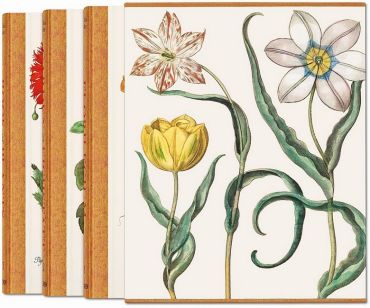



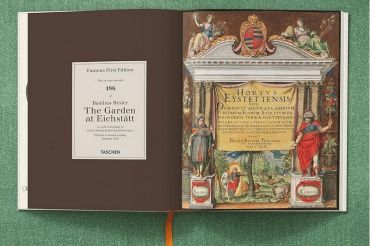


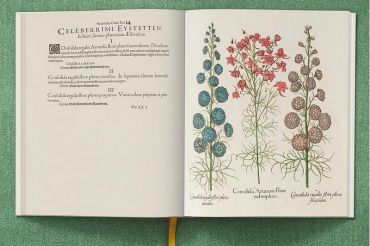
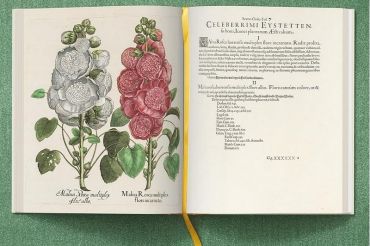


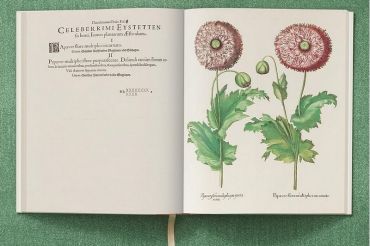
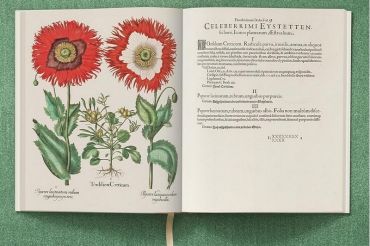




















допоможіть тим, хто ще не читав